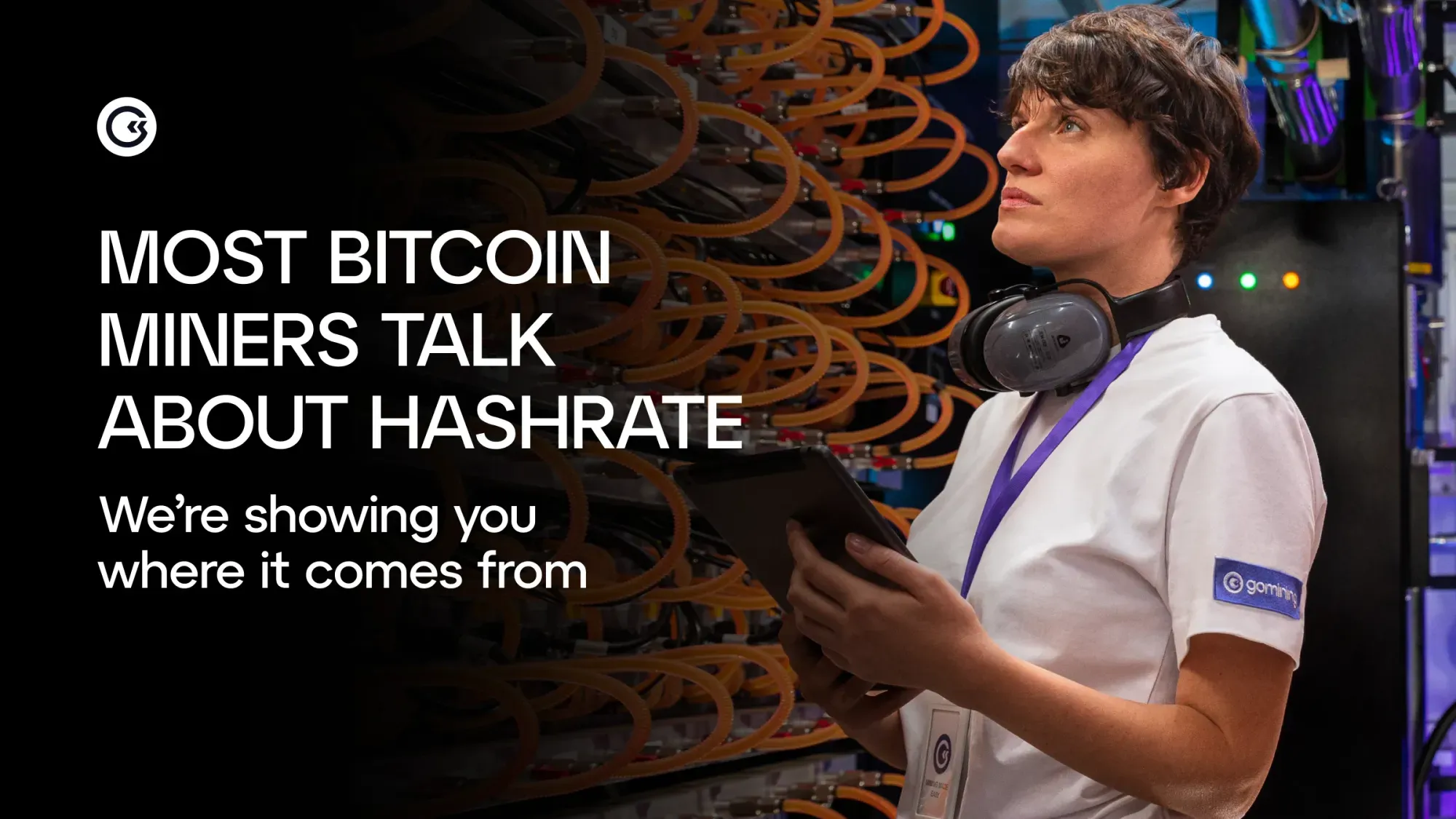When investing in Bitcoin, direct ownership remains the most common approach. However, investors can also gain exposure through exchange-traded funds (ETFs), futures and derivatives, or publicly traded companies with Bitcoin holdings, such as Coinbase or Strategy (previously MicroStrategy).
As the Bitcoin mining industry continues to grow, institutionalize, and professionalize, an increasing number of investors are seeking exposure to this sector. When comparing Bitcoin mining investments to spot BTC purchases and other Bitcoin investment vehicles, it’s crucial to understand the distinct characteristics.
Passive Investment vs. Active Business
Buying and holding Bitcoin is a relatively passive investment strategy. Once you own the Bitcoin, your main task is securing your digital wallet—there’s no need for continuous management. A Spot Bitcoin ETF allows investors buy and sell shares on traditional stock exchanges without needing to manage private keys or custody solutions. Making it even more accessible to institutional and retail investors, offering liquidity and regulatory oversight while eliminating the complexities of self-custody.
Bitcoin mining, on the other hand, is an active investment that requires ongoing infrastructure development, operational maintenance, and proactive monitoring of mining equipment. It involves staying informed about market conditions and managing relationships with service providers, including power suppliers and utilities. Additionally, it demands a skilled team to oversee day-to-day operations, ensuring efficiency and scalability.
Infrastructure-backed exposure
Bitcoin mining is an infrastructure-backed exposure because it requires substantial physical assets—such as ASIC miners, electrical infrastructure, cooling systems, and data center facilities—to generate Bitcoin.
Unlike simply holding Bitcoin or ETFs, mining involves capital-intensive operations, ongoing energy costs, and maintenance, making it a business rooted in real-world infrastructure. This backing provides a level of intrinsic value and operational leverage, as miners can optimize costs and scale operations to be able to generate Bitcoin below market price.
Pictured: GoMining infrastructure and techs deploying machines.
Non-Income Producing vs. Cash-Flow Generating Asset:
Bitcoin itself doesn’t generate regular income like dividend-paying stocks or interest-bearing bonds. While you can explore yield-generation methods using Bitcoin, these are often risky. Bitcoin is considered a speculative asset that relies on capital appreciation rather than consistent income. In contrast, Bitcoin miners earn newly created Bitcoin and transaction fees on a daily basis, offering a cash-flow-producing investment.
Compounding Returns
When Bitcoin miners receive Bitcoin rewards, they can choose to reinvest their earnings by purchasing more mining hardware or expanding their mining operation. This increases their mining capacity, allowing them to generate more Bitcoin, which can be reinvested again, leading to increased mining output and, ultimately, more rewards. Over time, this compounding effect can significantly boost the miner’s profitability. In essence, Bitcoin mining, when reinvested intelligently, can create a compounding effect through expanding the scale of operations
Market Volatility
Bitcoin’s value can fluctuate widely, exposing investors to substantial gains or losses depending on the timing of their purchases and sales. Bitcoin mining profitability is influenced by more than just Bitcoin price fluctuations. It also depends on difficulty adjustments, block rewards, transaction fees, and energy costs, which can vary based on the type of power agreement and market conditions. The mining hardware market is also cyclical, influenced by Bitcoin price movements and hardware innovation, making the timing of entry into mining crucial for maximizing profitability.
Liquidity
Bitcoin offers high liquidity, enabling easy buying and selling on various exchanges. Similarly, while Bitcoin ETFs are subject to market hours, they can also be easily bought and sold during those times. Bitcoin mining, however, requires significant investment in hardware, cooling systems, and infrastructure, which are less liquid. Selling mining infrastructure and equipment is not as straightforward, making it a more long-term investment. Considerations such as hardware lifespan and potential technological upgrades also play a role in the investment strategy.
The Ultimate Way to Dollar Cost Average into Bitcoin
Dollar-cost averaging (DCA) is widely regarded as an effective strategy for investing in Bitcoin due to its ability to mitigate the inherent volatility of the market. Bitcoin’s price can experience significant fluctuations, and DCA helps to smooth out the impact of these short-term swings by spreading out purchases over time. This allows investors to accumulate Bitcoin consistently, regardless of whether the market is bullish or bearish, helping avoid the emotional pitfalls of chasing market peaks or fearing downturns.
Additionally, DCA reduces the challenge of timing the market. Since it’s nearly impossible to predict the perfect moment to buy, DCA eliminates this pressure by ensuring a steady accumulation of Bitcoin at regular intervals, regardless of price. By fostering a long-term investment mindset, DCA encourages patience and discipline. Rather than focusing on short-term price movements, DCA investors are able to stay focused on Bitcoin’s potential for growth over time, thus aligning with the broader vision of Bitcoin as a store of value.
Bitcoin mining is considered the ultimate way to dollar-cost average (DCA) into Bitcoin because it allows miners to accumulate Bitcoin steadily over time, regardless of market price fluctuations. By mining, you receive Bitcoin as a reward for securing the network, effectively acquiring it at a consistent rate. This approach reduces the impact of short-term price volatility, as you are earning Bitcoin through the mining process rather than purchasing it at market prices.
Complexity of Operating Mining Facilities
Operating a mining facility is a multifaceted endeavour that demands a diverse skill set and expertise across various domains. Miners face several key challenges, including negotiating favourable energy contracts to secure competitive rates, managing significant upfront infrastructure costs, addressing issues related to heat and noise, navigating technical complexities involving networking and cybersecurity, and handling ongoing operational expenses. Managing these factors effectively is critical to ensuring the long-term profitability and sustainability of the operation.
Navigating Energy Markets and Securing Affordable Power
Energy markets are complex systems that facilitate the buying and selling of energy products, primarily electricity, natural gas, oil, and renewable energy certificates. These markets operate through diverse mechanisms and structures, varying by region and energy type. A solid understanding of energy markets and their economics is crucial to the success of a mining business as electricity represents the largest portion of operational expenses.
For operators, securing affordable electricity can be a significant challenge. It demands thorough due diligence and a deep understanding of complex power purchase agreements. Additionally, building strong relationships with utilities and power providers takes time, as you must demonstrate that you are a reliable and consistent customer.
Mastering Operational Management
Managing a Bitcoin mining operation involves a complex range of responsibilities, particularly when it comes to infrastructure management. Facility operators are fully accountable for all aspects of the facility, including power, cooling, network connectivity, maintenance, and repairs.
These tasks can be resource-intensive and require constant attention to ensure the smooth operation and high uptime of the facility. Skilled labour and specialized knowledge are essential to keeping everything running efficiently.


Pictured: GoMining techs on site.
The Importance of Economies of Scale in Mining Operations
Economies of scale are a fundamental driver of profitability and competitiveness in mining operations. When operating a smaller fleet of mining machines, the cost per ASIC miner tends to be higher compared to larger fleets. This is because smaller operations lack the purchasing power that large-scale operators can leverage to reduce costs across several areas.
Large mining operations can purchase hardware in bulk, resulting in discounts on ASIC miners and other essential equipment. Additionally, large operators often have the resources to invest in more efficient infrastructure, including advanced cooling systems and optimized power setups, which can further lower operational costs. Electricity rates, which are typically the largest ongoing expense for any mining operation, are another area where economies of scale play a significant role. Larger operations can negotiate better rates with power providers, or secure access to cheaper, more abundant electricity.
In addition to hardware and electricity, large operations can often spread administrative and maintenance costs over a larger number of machines, reducing the per-unit expense for staffing, repairs, and other operational needs. This further enhances the cost efficiency of larger fleets and gives them a competitive edge in the marketplace.
Drone Image: GoMining Data Center in Norway
Bitcoin mining is becoming an increasingly attractive yield-generating asset for institutions in a maturing financial market. As traditional investment options evolve, many institutional investors are turning to Bitcoin mining to diversify their portfolios and capitalize on the growth of the digital assets sector.
The GM Alpha Block fund offers a unique opportunity for institutional investors, offering access to Bitcoin mining through a professionally managed, infrastructure-backed strategy that is designed to generate yield and scale over time.
Explore how GoMining Institutional provides access to Bitcoin mining as a yield-bearing strategy, visit institutional.gomining.com
Nico Smid, GoMining Institutional Research Analyst.
April 15, 2025












